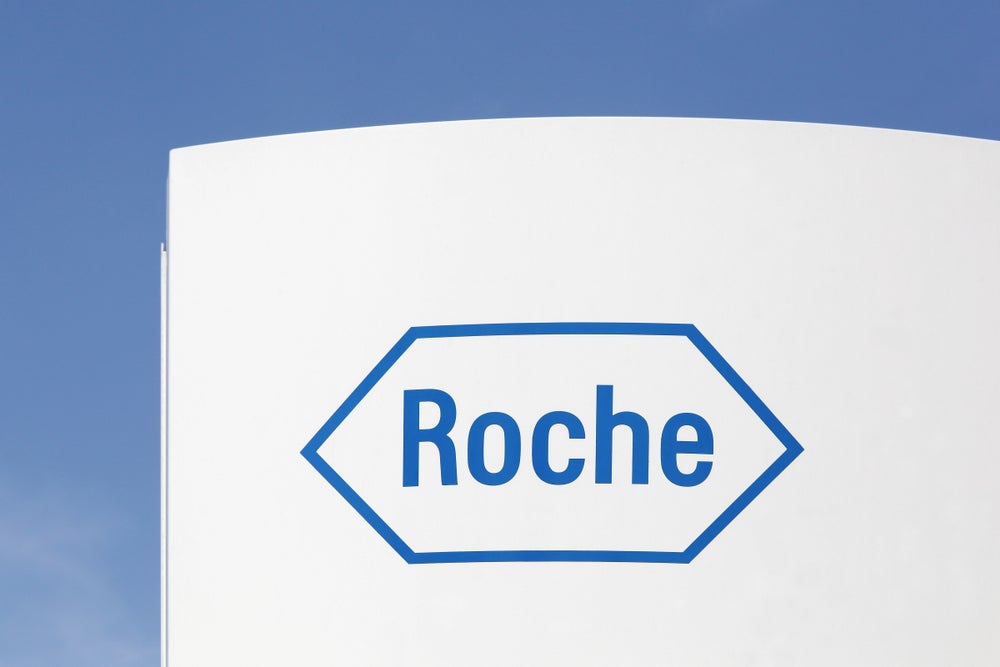New Tissue Transcriptome Reveals Atopic Dermatitis Markers
In a groundbreaking advancement that promises to reshape our understanding and treatment of atopic dermatitis, researchers have unveiled a sophisticated tissue transcriptome analysis technique that elucidates potential molecular markers directly linked to skin phenotypes and therapeutic responsiveness. This unbiased approach strips away the traditional limitations of targeted gene studies, diving deep into the complex interplay […]


In a groundbreaking advancement that promises to reshape our understanding and treatment of atopic dermatitis, researchers have unveiled a sophisticated tissue transcriptome analysis technique that elucidates potential molecular markers directly linked to skin phenotypes and therapeutic responsiveness. This unbiased approach strips away the traditional limitations of targeted gene studies, diving deep into the complex interplay of gene expression within affected skin tissue. The findings, published in Nature Communications, shed new light on the intricate biological underpinnings that define varied clinical presentations of this pervasive skin condition, opening avenues for precision medicine strategies tailored to individual patient profiles.
Atopic dermatitis (AD), commonly known as eczema, is a chronic inflammatory skin disorder marked by periods of exacerbation and remission. Despite its prevalence, the molecular mechanisms dictating individual disease manifestations and responses to therapy have been notoriously difficult to unravel. This challenge largely stems from the immense heterogeneity of the disease at a cellular and molecular level, compounded by skin’s intricate architecture comprising multiple cell types with distinct transcriptional landscapes. Traditional analyses often focus on candidate genes or limited cell populations, which may overlook critical interactions and subtle transcriptomic signatures essential for understanding disease pathogenesis and predicting treatment outcomes.
The study led by Fukushima-Nomura, Kawasaki, Yashiro, and colleagues applied an unbiased tissue transcriptome profiling methodology that bypasses the selective lens of hypothesis-driven research. By capturing gene expression data across entire skin biopsy samples from patients with varying AD phenotypes, the team amassed a comprehensive genetic atlas that includes both epidermal and dermal compartments. Advanced computational algorithms enabled the deconvolution of data, discerning unique transcriptional patterns associated with diverse clinical features like lesion severity, chronicity, and pruritus intensity. This holistic approach provides a panoramic view of the disease’s molecular ecosystem, unearthing novel biomarkers hitherto obscured by traditional techniques.
.adsslot_KHEpJRxtj0{width:728px !important;height:90px !important;}
@media(max-width:1199px){ .adsslot_KHEpJRxtj0{width:468px !important;height:60px !important;}
}
@media(max-width:767px){ .adsslot_KHEpJRxtj0{width:320px !important;height:50px !important;}
}
ADVERTISEMENT
One of the most significant revelations of this work is the identification of discrete transcriptomic signatures corresponding to specific skin phenotypes in AD. These include gene clusters linked to barrier dysfunction, immune activation, and epidermal differentiation, which collectively orchestrate the disease’s clinical heterogeneity. For example, certain gene expression profiles correlate strongly with heightened Th2-driven inflammatory pathways, a hallmark of acute flares, whereas others reflect chronic remodeling processes emphasizing immune suppression and fibrosis. This nuanced molecular stratification offers an unprecedented framework to contextualize patient variability, moving beyond the conventional “one-size-fits-all” diagnostic paradigm toward a more individualized understanding.
Perhaps even more transformative is the study’s implications for therapeutic responsiveness. Utilizing transcriptomic data obtained before and after treatment interventions, the researchers pinpointed gene sets predictive of favorable or poor responses to standard AD therapies, including topical corticosteroids and newer biologic agents targeting cytokines like IL-4 and IL-13. These predictive markers could serve as invaluable tools in guiding clinical decision-making, allowing physicians to tailor interventions based on a patient’s unique molecular fingerprint rather than relying solely on symptomatic assessment or trial-and-error approaches. Such precision medicine has the potential to reduce treatment failures, adverse effects, and overall healthcare burdens associated with AD.
Underpinning the success of this research is the integration of cutting-edge next-generation sequencing platforms with rigorous bioinformatics pipelines capable of handling vast datasets with high dimensionality. The team leveraged RNA sequencing at unprecedented depth and resolution, generating quantitative profiles of transcripts expressed in lesional and non-lesional skin. Subsequent normalization, clustering, and pathway enrichment analyses distill complex data into biologically meaningful insights, highlighting both known and novel molecular actors involved in AD pathophysiology. This analytic rigor ensures that the reported biomarkers are robust, reproducible, and clinically relevant.
Moreover, the unbiased design of the study circumvents biases intrinsic to pre-selected gene panels, enabling the discovery of unexpected molecular players that may serve as therapeutic targets or diagnostic indicators. For instance, novel cytokines and chemokines that had not been previously linked to AD emerged from the data—some of which are also implicated in other inflammatory and autoimmune diseases, suggesting overlapping pathogenic threads that may be exploited for cross-disease therapies. This opens exciting translational possibilities that extend well beyond dermatology, potentially informing systemic intervention strategies.
The findings also underscore the critical role of the skin microenvironment in dictating disease trajectory. Tissue transcriptome profiles reveal dynamic crosstalk between keratinocytes, immune cells, fibroblasts, and endothelial cells, mediated through intricate signaling networks. Disruptions to this cellular dialogue appear central to lesion development and persistence, highlighting the importance of targeting microenvironmental factors alongside immune modulation. Future research informed by these insights may develop combinatorial therapies designed to restore homeostasis within the skin’s ecosystem more effectively than monotherapies.
Importantly, the research team took steps to ensure clinical applicability by validating their transcriptomic biomarkers in independent patient cohorts across multiple geographic locations and ethnically diverse populations. This strengthens the generalizability of their findings and enhances the potential for implementation in real-world clinical settings. Efforts to integrate transcriptomic assays into routine dermatological practice could revolutionize disease monitoring, allowing for earlier intervention and adaptive management strategies informed by molecular diagnostics.
Technological advancements underpinning this breakthrough also extend to single-cell RNA sequencing and spatial transcriptomics—techniques anticipated to further refine our understanding of cellular heterogeneity and tissue architecture in AD. Although the current study focused on bulk tissue analysis, future directions aim to resolve gene expression at single-cell resolution within the native spatial context, elucidating cell-specific contributions and interactions with unparalleled granularity. These innovations promise to unveil additional layers of complexity and identify rare but clinically significant cell populations involved in disease progression.
Furthermore, the implications of this study reach into the realm of drug development. Identifying molecular markers predictive of therapeutic response can streamline clinical trials by enriching patient cohorts most likely to benefit from investigational drugs, thus improving efficacy signals and minimizing resource wastage. Pharmaceutical companies may leverage these biomarkers as companion diagnostics, facilitating regulatory approval and personalized prescription. This paradigm shift aligns with broader trends toward precision dermatology and individualized patient care.
From a patient perspective, this research carries hope for enhanced quality of life and more effective disease control. AD significantly impairs physical comfort and psychosocial wellbeing due to persistent itching, visible lesions, and treatment-related side effects. Molecularly guided therapies could reduce flares, minimize adverse reactions, and enable patients to regain confidence in their skin health. Additionally, the approach sets a precedent for addressing other heterogeneous skin disorders where current management remains suboptimal.
In conclusion, Fukushima-Nomura and colleagues have charted a compelling path forward in atopic dermatitis research by harnessing the power of unbiased tissue transcriptomics to decode the complexity of skin phenotypes and therapeutic responses. Their integrative and meticulous methodology establishes a blueprint for deploying advanced omics technologies in dermatology and beyond. As the field moves toward molecularly informed clinical practice, such pioneering work illuminates the possibilities and responsibilities that accompany this new era—transforming not only patient outcomes but also the fundamental paradigms through which we understand human health and disease.
Subject of Research: Atopic dermatitis; tissue transcriptome analysis; skin phenotypes; molecular biomarkers; therapeutic response prediction.
Article Title: An unbiased tissue transcriptome analysis identifies potential markers for skin phenotypes and therapeutic responses in atopic dermatitis.
Article References:
Fukushima-Nomura, A., Kawasaki, H., Yashiro, K. et al. An unbiased tissue transcriptome analysis identifies potential markers for skin phenotypes and therapeutic responses in atopic dermatitis. Nat Commun 16, 4981 (2025). https://doi.org/10.1038/s41467-025-59340-x
Image Credits: AI Generated
Tags: atopic dermatitis researchchronic inflammatory skin diseasegene expression in atopic dermatitismolecular markers in eczemaNature Communications studyprecision medicine for skin disordersskin phenotypes and treatmenttherapeutic responsiveness in eczematissue transcriptome analysistranscriptomic signatures in skinunderstanding disease heterogeneityunraveling eczema pathogenesis
What's Your Reaction?


































